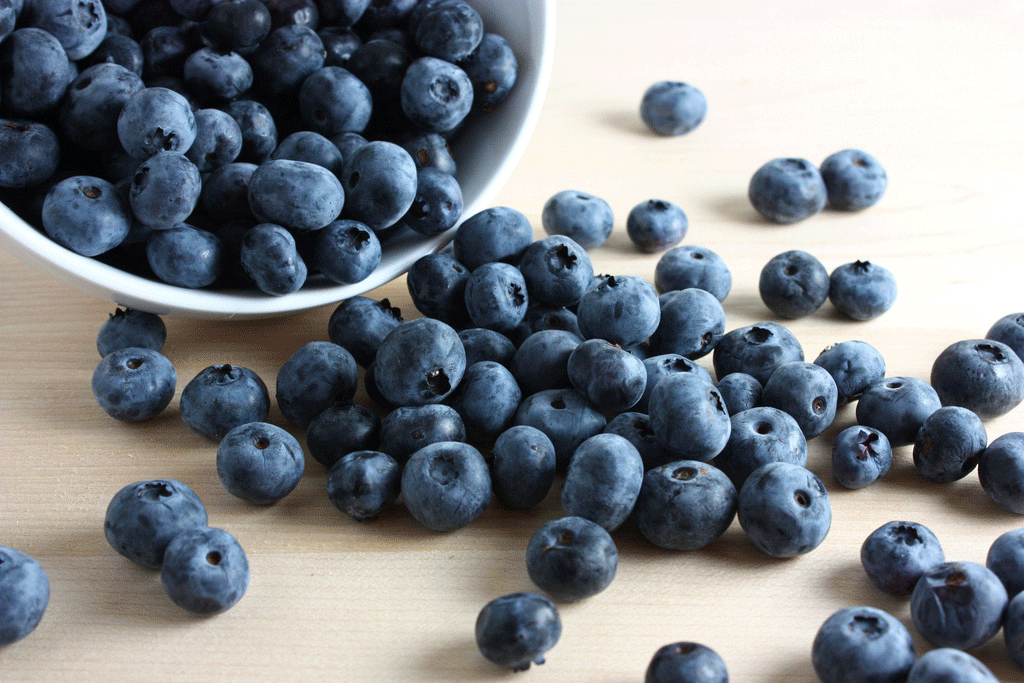Long-Lived and Dependable, blueberries are among the easiest fruits to grow organically. Different species are native to various regions of North America, but you can grow some type of blueberry bush almost anywhere. The limiting factor is soil acidity: except for saskatoons, blueberries require acidic soil with a pH below 5.0. Blueberries can also be grown in containers filled with an acidic bark-based planting mix.
TYPES OF BLUEBERRIES TO TRY
Lowbush blueberries are native to colder parts of North America. The compact bushes can be grown as an edible hedge or groundcover, even in partial shade, and they bear delicious berries that hold on the plants for a long time.
Northern highbush blueberries grow wild in the eastern mountains of the United States. Cultivated strains grow into 6-foot-tall bushes that bear for many years, with bright red or orange fall foliage.
Southern highbush blueberries are low-chill versions of northern highbush blueberries, making them a good choice in Zones 7 to 10.
Rabbiteye blueberries are descended from southeastern native plants. Tolerant of heat and humidity, rabbiteyes are the best to grow where winters are mild.
Saskatoons are the top choice for cold climates. The hardiest varieties can survive to -60°F. Related to roses, the almond-scented fruits easily pass for true blueberries. Saskatoons prefer a near-neutral soil pH between 6.0 and 7.0.
WHEN TO PLANT BLUEBERRIES
Late winter or early spring, during the 6 weeks prior to your last spring frost, is the best time for planting blueberries. Young container-grown plants may be set out later but need time to grow roots before hot weather. Blueberries are only marginally self-fertile, so you’ll need to grow at least three plants of compatible varieties.
HOW TO PLANT BLUEBERRIES
Choose a sunny, well-drained site that has an acidic pH for growing blueberry bushes. Young blueberry plants need an abundance of organic matter in the soil’s shallowest layers. Most soils should be amended with 4 inches of acidic organic matter such as rotted sawdust or leaf compost. Preparing the site in fall will help the organic matter settle into the soil, which will enhance transplant survival in spring. If your soil’s natural pH ranges between 5.5 and 6.0, you can further acidify it by top-dressing with soil sulfur twice a year. In areas with soil pH levels above 6.0, grow blueberries in large containers filled with a wood chip– or bark-based planting mixture.
Spacing recommendations for growing blueberries range from 12 inches between plants for lowbush blueberries to 12 feet between saskatoons. Allow 4 feet between highbush blueberry plants and 6 feet between rabbiteyes. Set plants at the same depth they grew in their pots. Water thoroughly, and mulch the soil’s surface with at least 2 inches of acidic mulch such as wood chips. Cut back to ground level all but the two most vigorous upright shoots.
PRUNING BLUEBERRY BUSHES
Learning how to grow blueberries involves employing proper pruning technique and balancing new growth with old. Pruning is essential to keep production high, plants at a manageable height, and berry size large. Healthy highbush blueberries and rabbiteyes should produce at least one new cane each year, but there may be more. In late winter, count the number of new canes and cut off an equal number of old ones at ground level. Cut back the tips of the new canes to encourage branching, and snip out dead branches and low limbs that would touch the ground if fruit-laden.
HARVESTING AND STORING BLUEBERRIES
Blueberries taste best if they stay on the plant for a few days after they turn blue. Pick blueberries at least twice a week while they are ripe. Choose a mix of early-and late-maturing varieties to have fresh blueberries for more than a month. Freeze freshly picked blueberries without washing them or adding sugar.
PEST AND DISEASE PREVENTION TIPS
Blueberries have few serious pest or disease problems. Birds can harvest more than their share; tulle netting works well to deter them. Most other problems can be solved by adjusting your soil’s acidity.
IN THE KITCHEN
Blueberries are among the healthiest foods you can eat, thanks to their high concentrations of antioxidants, which help guard against cancer and heart disease. A good source of dietary fiber and potassium along with vitamins A and C, blueberries are at their nutritional peak when eaten straight off the bush.
Almond and cinnamon each make excellent flavor partners for blueberries in cakes and muffins. Try adding chopped apples to blueberry pie to give the filling better structure. Frozen blueberries make delicious snacks, or you can use them in smoothies or in baking. Fresh or frozen blueberries can be made into low-sugar preserves, which can be canned in a water bath canner.
TIPS FOR GROWING BLUEBERRIES
- Pick off flowers that form on blueberry bushes their first year. (This allows plants to put all of their energy into getting a strong start.)
- Water new blueberry plantings during dry spells, and renew mulch as needed to maintain a 2-inch-deep layer.
- After plants are established, fertilize them in spring with a light application of a balanced organic fertilizer, or use an organic fertilizer labeled for acid-loving azaleas or hollies. Fertilize blueberries in late summer to help plants set plenty of flower buds.
- Give blueberries watering priority during droughts. Blueberry bushes have extensive surface roots, so watch the wetting pattern of your watering equipment to ensure a thorough soaking to 6 inches deep.


